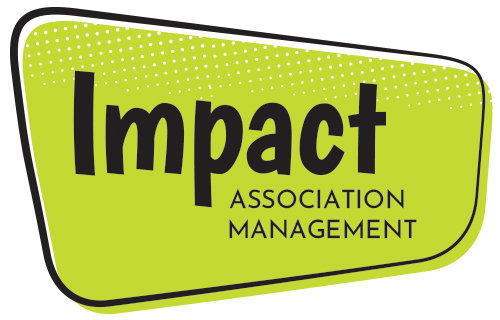By, Sawyer Myers, Association Manager, Impact Association Management
Delivering bad news to a Board of Directors can be daunting, especially if you are early in your working relationship with them. However, open communication—be it negative or positive—is crucial to establishing trust. Even with bad news, there are ways to turn the negative into a positive, which will ultimately help you establish that foundational trust and ensure a successful partnership.
Deliver the Bad News Early in the Relationship
When you begin working with a Board of Directors and learning the ins and outs of their processes, it’s common to run into hurdles and find idiosyncrasies that limit efficiency or even outright cause issues. If you do identify a problem early, on it’s important not to withhold that information from the board. Address the problem with the board directly. Present your findings and then present the solution to prevent this issue from happening again.
For example, you can use this formula:
Identify what information or task you were presented with
Explain the issue you found
Present what you are going to do to prevent it from happening moving forward
While the news may be bad, putting a positive spin on it by immediately sharing a potential solution will help build trust with the board. It demonstrates that you are going to confidently develop and carry out solutions to fix any issues that you may come across. The idea is not to make the board members feel uneasy about the past, but confident that you will fix problems in the future.
Remember to Share the Good News, Too!
While it is important to share the bad news, you should also share the good news. Research suggests that we have three times more positive experiences than negative, but we are more likely to forget the positive experiences than we are the negative. Negativity bias is the brain’s tendency to give more weight to the negative rather than the positive, causing bad news to “stick” much more than positive news. This means bad impressions form much quicker than positive ones, making it even more important to consistently share positive news with your Board of Directors.
When communicating with board members, be sure to present a healthy mixture of the association’s successes and the challenges that still need to be addressed. Don’t just focus on the issues; celebrate the wins! Not only will this help you make a more positive and trustworthy impression, but sharing good news is said to influence an individual’s well-being and could help improve relationships, increase overall satisfaction, and give them more energy.
3 Quick Tips for Delivering Bad News
1. Sharing bad news is an opportunity to demonstrate your value
Effectively delivering bad news is a valuable skill and shows you are focused on making the association as successful as possible. It demonstrates that you don’t shy away from difficult conversations and are able to identify and address issues quickly and efficiently.
2. Earlier is better
Holding onto important information, especially bad information, can lead to mistrust and ultimately cause bigger issues. You want to avoid the dreaded “you knew this the whole time and didn’t tell us?” conversation at all costs. Once you identify the issue, make an immediate plan to develop a solution and share it with the board at the next possible opportunity.
3. Listen and let people be upset
It is likely that the board, or at least certain members of the board, will be upset by the news that you are sharing with them. Even if you are not at fault for the issue, allow the board to respond in their own way after delivering the bad news. Do your best to remain professional and not cause even more tension by getting defensive. Let them process the news and then move forward with the solution.
Learn more tips to effectively communicate in tough situations in our recent blog post.
Additionally, Impact’s team of association professionals are experts in identifying where greater efficiencies are needed and maintaining open and honest communication with board members. Learn more about Impact’s Association Management services.

